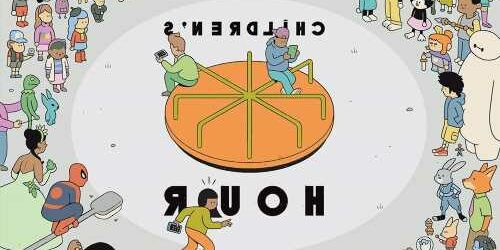The U.K. government’s decision last week to shut down the pioneering BFI Young Audiences Content Fund sent shockwaves around the industry. Among those incensed was Anna Home, chair of the Children’s Media Foundation (CMF), a non-profit organization focused on securing the best media choices for young people on all platforms. Home, a BAFTA-winning TV producer whose credits include “Grange Hill” and “Jackanory,” shares her thoughts on the matter in an exclusive column for Variety.
The U.K.’s TV industry is a creative powerhouse that is up there with the best in the world. It survives on a mix of international investment, commercial funding and public subsidy and the kids’ sector is in the same mould. But there are some subtle differences that makes kids a special case in a country which has a long history of supporting its culture through public service funding. The recent closure of the Young Audiences Content Fund is another chapter in that story — one which we in the Children’s Media Foundation (CMF) believe isn’t over yet.
When commercial TV started in the 1950s, a unique system of “plural public service” developed. The BBC is funded by the licence fee — a tax on TV ownership — and the commercial channels by advertising. But ITV, Channel 4 and Channel 5 take on obligations in return for privileges and children’s TV was one of them. It’s a system that’s had its ups and downs, but at its best it provided a wide range of content — drama, comedy, news, factual and entertainment for all ages — in a healthy, competitive environment. Programs were non-commercial, U.K.-focused, gave kids a voice and told their stories.
However, deregulation in the early 2000s and the fragmentation of ad revenue meant kids’ commissioning on the commercial public service broadcasters declined. The 2007 junk food advertising restrictions made things worse. The BBC, from the high point when they launched CBeebies and CBBC channels, also faced continuous spending cuts. Tax incentives for animation and children’s programs helped, but the regulator Ofcom reported a 40% decrease in spending on children’s content from 2006 to 2017 and the trend has continued.
This “market failure” matters. Television — and particularly public service content — plays a huge part in connecting kids to the culture and society in which they are growing up. It inevitably impacts on their engagement later in life. And young people are aware of missing out. An Ofcom review in 2018 revealed that children feel they don’t see themselves enough on TV and, in recent research conducted for CMF, they complained about not being listened to.
The CMF campaigned since 2011 for money to restore a greater range of public service content. Eventually the government responded with a “Contestable Fund” distributing £60 million ($80.6 million) of public finance over a three-year pilot. New regulations requiring ITV, Channel 4 and Channel 5 to commission more content for the younger audience came in at the same time, so CMF lobbied hard to apply the fund to young people. It was perfect “joined-up government” — carrot and stick — and in April 2019 the Young Audiences Content Fund launched with £57 million of the finance.
The fund had a number of criteria, including innovation, the stimulation of knowledge, reflecting U.K. cultural identity, innovation, diversity, encouraging new producers, regional content and greater plurality in supply. It offered up to 50% non-recoupable funding for making programs and access to development funding. Production budgets needed free to air broadcasters attached, which meant in the main the commercial public service broadcasters would get more content.
In its first two years, the fund proved its worth: 55 new projects in a variety of genres were successfully financed, and 144 development grants distributed. New producers benefited, as did ITV, Channel 4 and Channel 5 who all expanded origination. Broadcasters in Wales and Scotland commissioned new content in their own languages.
Then COVID-19 happened. The huge drain on government finances should have been a wake-up call. First, the fund’s third-year budget was cut by £13 million. Suddenly, £57 million was £44 million. Next, without waiting for a full evaluation, the government announced it would not continue after the pilot end-date. The announcement came in tandem with a decision on BBC licence fee for the next five years, which included a two-year freeze with no allowance for inflation — so, essentially a cut.
To calm BBC fears, the government made a commitment not to use licence fee revenue to finance “contestable funding.” This makes sense and we support it. There is little point in stripping public money from the BBC who do their best for kids, to hand it to another organization. What’s needed is more money in the system overall, not the same pot split inefficiently.
CMF advocates a levy — a micro-tax to generate funding from the streamers’ U.K. revenues. Levies are being applied across Europe to channel revenue into public service content. They’re unpopular with the streamers who already spend significant sums on production in the U.K. But if there is one clear-cut case for a levy, it’s kids. Particularly as COVID takes its toll on their mental health, socialization, relationship building, educational attainment and fun! When’s a better time for supporting public service content for young people than during and post pandemic?
We also proposed adding National Lottery funding to the mix. The Lottery Cultural Fund finances the British Film Institute to support U.K.-based features. Since the BFI also operates the Young Audiences Content Fund we proposed an increase in Lottery allocation to cover some of the cost of continuing.
So far, there’s no movement on either of those ideas. But if the government sticks to this decision, we will be back where we were three years ago, with a reduced BBC as the only game in town for kids’ commissioning. CMF is concerned about how this “cultural vandalism” will affect the audience. The industry is equally concerned about its own health going forward.
The fund not only stimulated the industry and supported the audience, it also showed commitment to innovation. Its continuation would provide a basis for exploring new ways to fund and supply public service content, especially in relation to this most mobile and agile of audiences, kids and teens.
CMF plans to work with the children’s production community to persuade the government to reverse this short-sighted and wasteful decision. Politicians need to understand this is vital not just for the young but for all of us. It’s about the glue which binds us, and at a time when media can so easily divide and fracture communities, our young people need all the help they can get.
Source: Read Full Article


